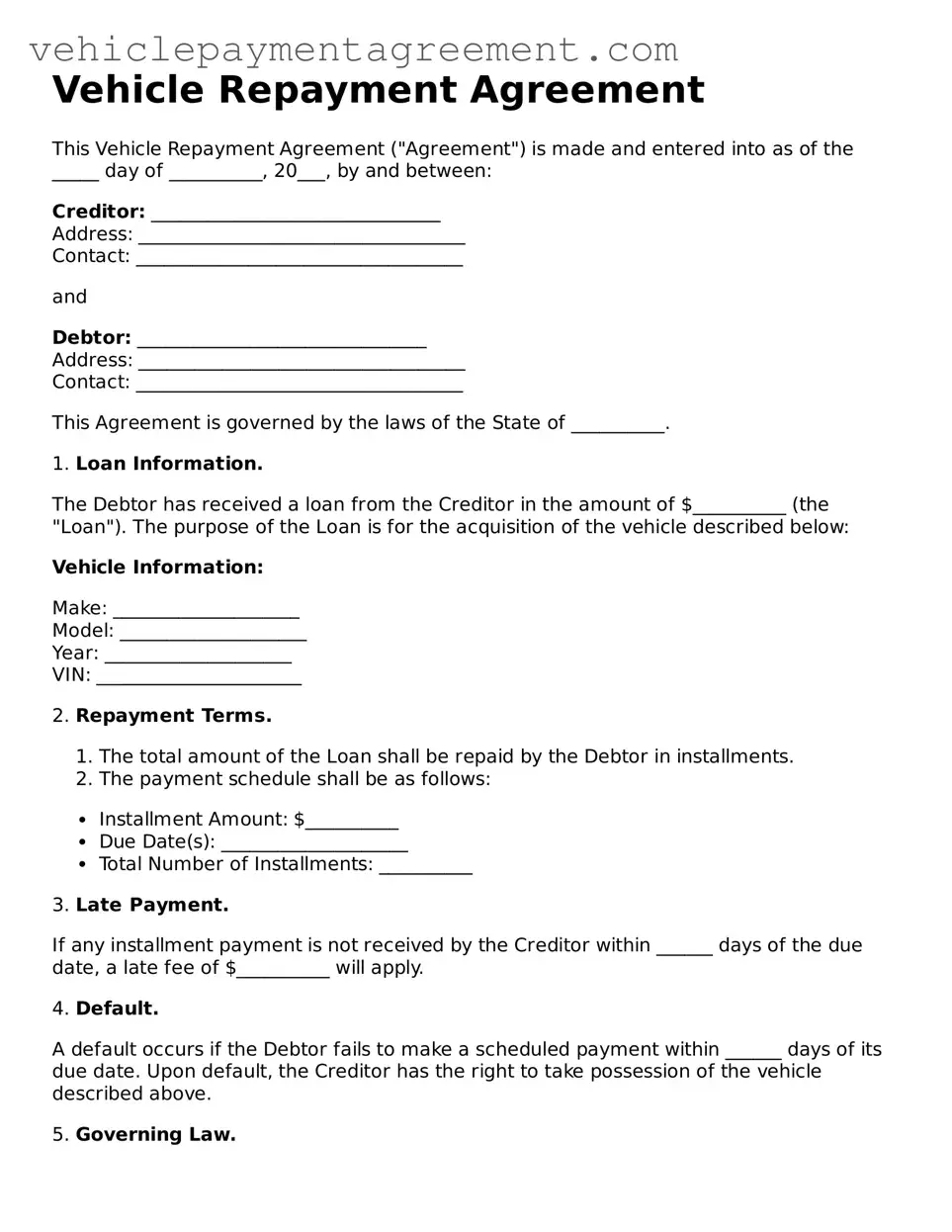Similar forms
The Vehicle Repayment Agreement form shares similarities with a Loan Agreement. Both documents outline the terms and conditions under which a borrower agrees to repay borrowed funds. A Loan Agreement typically includes details about the loan amount, interest rates, repayment schedule, and any collateral involved. Like the Vehicle Repayment Agreement, it aims to protect the lender's interests while clearly defining the borrower's obligations. Both documents serve as a legally binding contract that can be enforced in court if necessary.
Another document akin to the Vehicle Repayment Agreement is the Promissory Note. This is a written promise to pay a specified amount of money at a designated time. While the Vehicle Repayment Agreement might focus specifically on vehicle financing, the Promissory Note can apply to various types of loans. Both documents include key information such as the amount borrowed, interest rates, and repayment terms. They are essential for establishing a clear understanding between the lender and borrower regarding financial responsibilities.
When considering the Investment Letter of Intent for your financial dealings, it is vital to understand its implications. This document serves as a preliminary outline of your investment commitment, establishing foundational terms that guide future negotiations. For detailed insights, refer to this comprehensive guide on the Investment Letter of Intent process.
The Security Agreement is also similar to the Vehicle Repayment Agreement. This document provides the lender with a security interest in the vehicle being financed. In both cases, the lender retains rights to the vehicle until the borrower fulfills their repayment obligations. The Security Agreement outlines the terms under which the lender can reclaim the vehicle if the borrower defaults. This shared focus on collateral helps ensure that both parties are aware of their rights and responsibilities throughout the financing process.
A Lease Agreement bears some resemblance to the Vehicle Repayment Agreement, particularly in the context of vehicle leasing. While a Lease Agreement typically involves renting a vehicle rather than purchasing it, both documents set forth terms regarding payments and responsibilities. They outline the duration of the agreement, payment amounts, and conditions for termination. Both agreements aim to clarify expectations and protect the interests of both the lessor and lessee or lender and borrower.
Lastly, the Installment Sale Agreement is comparable to the Vehicle Repayment Agreement in that both involve a series of payments for the purchase of an asset. An Installment Sale Agreement allows a buyer to pay for a vehicle in installments while taking possession of it immediately. Like the Vehicle Repayment Agreement, it includes details about the purchase price, payment schedule, and consequences of default. Both agreements serve to facilitate the transfer of ownership while ensuring that the seller's interests are safeguarded until full payment is received.
